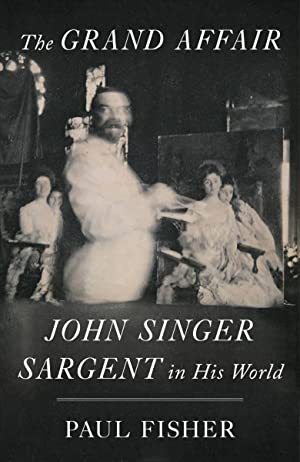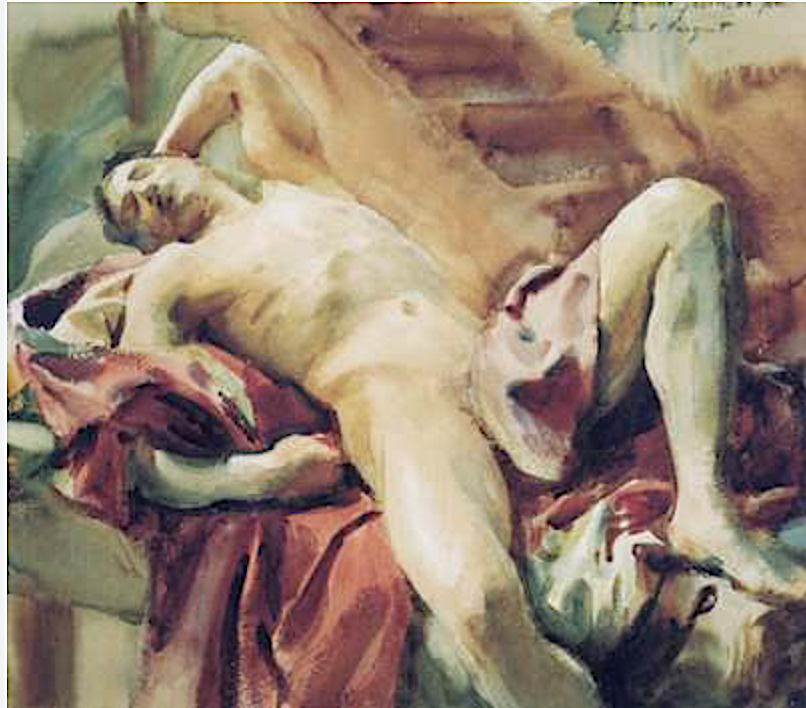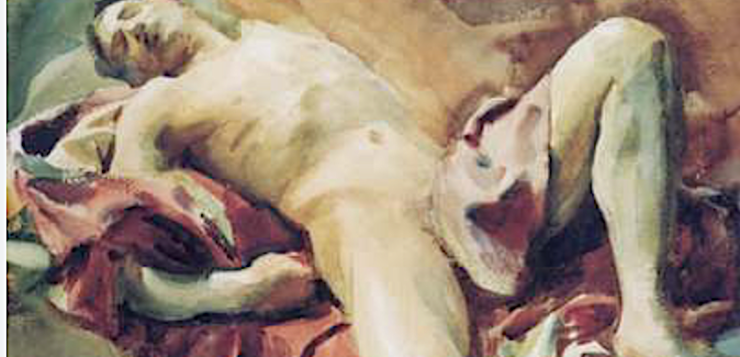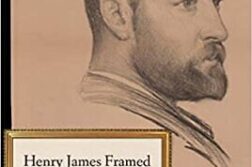 THE GRAND AFFAIR
THE GRAND AFFAIR
John Singer Sargent in His World
by Paul Fisher
Farrar, Straus and Giroux
479 pages, $40.
“YOU KNOW, I’m terrified of your brother,” a guest confessed at the dinner that John Singer Sargent’s sister Emily, who lived just a few blocks from him in London, gave on what turned out to be the last night of her brother’s life. And why not? There had always been something formidable about Sargent, something that discouraged questions, certainly about his personal life. He was, in the estimation of Paul Fisher, his latest biographer, “a shy and private man.”
And then there were his accomplishments. On the night of that dinner, Sargent was the famous portrait painter of the great and good of Anglo-American society: people like Teddy Roosevelt, Woodrow Wilson, the Duke of Marlborough, George V, John D. Rockefeller, and innumerable socialites. He had been given five honorary degrees, sixteen exhibition prizes, a Légion d’honneur, and membership in the Royal Academy, and he was chairman of the British School in Rome. He was an autodidact, fluent in Italian and French—the book beside his bed the night he died in his sleep in 1925 was Voltaire’s Dictionnaire philosophique—and, in Fisher’s phrase, “a card-carrying workaholic.”
He was physically impressive too—tall, bearded (which hid a recessive chin), with large blue eyes that were slightly protuberant. Two of his self-portraits show a face one could justifiably call haughty. In the later portrait, he looks like a British aristocrat, which is evidently how Sargent wanted to present himself to the world: as one of the people he painted. The blurred photograph on the cover of Paul Fisher’s new biography, on the other hand, shows a different man: round-faced, with slightly bulging eyes and the air of someone who might lose his temper at any moment, almost a figure from Fawlty Towers. Quite handsome when young, in later life, even in formal dinner dress, he was said to look “like a sailor gone wrong.”
In fact, Sargent had in almost all respects gone right. The son of American parents who went to Europe on a visit and never came back, Sargent had the sort of childhood that makes Henry James’s peripatetic upbringing look stable. The Sargents were rich, but not rich enough to stay wherever they wanted. Instead, after losing two children in infancy, they traveled to places that they thought would be salubrious for their surviving offspring (John and two sisters). In winter the family went to the south of France, in summer to the Alps, where Sargent formed a lifelong love affair with mountaineering while hiking with his father. His talent for sketching what he saw along the way was so impressive at an early age that his parents decided to nurture it, culminating in their move to Paris so that Sargent could study with one of the established painters who took students—in his case, Carolus-Duran, who admitted him on the spot after seeing his work. Even Sargent’s classmates recognized his superior gifts, and his first submission to the Paris Salon, a portrait of his teacher, was a hit.
Sargent is still thought of as a portrait painter today—he made so many—though his favorite medium was watercolors. Watercolors seem to have been done for his own pleasure, oil paintings to make a living. About portraits Sargent was deflating. “A portrait,” he used to say, “is a picture in which there is just a tiny little something not quite right about the mouth.” But it was a genre at which he excelled. Being chosen for the annual Paris Salon was not enough; he wanted his portraits of women in society to create a buzz—which they did, until he went too far with his portrait of Amélie Gautreau, the New Orleans-born wife of a French merchant banker. The painting called Madame X so scandalized Paris—in part because Sargent had depicted one of the straps on her black dress slipping down her shoulder—that when putting the strap back did not solve the problem, he moved to London, on Henry James’ advice, to start all over again.

In London, he took over a studio on Tite Street that had once been used by Whistler. Across the street was Oscar Wilde, whose article on London models—“a class of people whose sole profession is to stand and pose”—depicted the milieu in which Sargent thrived. When people would knock on his door asking for work, Sargent, if interested, would invite them in and ask them to remove their clothes “so I can see your figure.” One of these was Nicola D’Inverno, an amateur boxer who became not only Sargent’s model but his studio manager and valet for 25 years, until D’Inverno got into a fight with the bartender at the Hotel Vendome in Boston and Sargent had to let him go. Long before that, however, Sargent’s studio on Tite Street became the lodestar of fashionable London. For his own pleasure, he joined fellow painters who gathered to paint outdoors in a village called Broadway in the Cotswolds.
At the height of his career, Sargent was so much in demand that he was able to charge for one portrait what it would take to purchase a house. However, toward the end he became extremely tired of doing them. “Paw-traits,” he called them, mocking the accent of the people he painted. One of the things he hated about the sessions was the fact that the artist was expected to make small talk with his sitter while he painted. To relieve the strain of capturing his subject he would withdraw behind a curtain during breaks and stick his tongue out at his sitter. Even the people he liked were subject to his cold eye. Isabella Stewart Gardner, Sargent told his childhood friend, the writer Vernon Lee, had “a face like a lemon with a mouth for a slit.”
Eventually Sargent got tired of his meal ticket. By the time Boston’s Museum of Fine Arts, Boston Public Library, and Harvard University all asked him to paint murals for them, he leapt at the chance. The murals—with grand subjects like The Triumph of Religion—took fifteen years to research and paint. Meanwhile, just as he had in childhood, he went to the Alps in summer with his mother and two sisters. He was constantly traveling, preferably with a friend, and of course his valet. By the time he died in his sleep at the age of 69, in London, he had led a very full life indeed.
EVER SINCE THEN, there have always been two lingering questions regarding Sargent: Was he a great painter, or merely a superficial talent? And was he what we would call a gay man? The murals are considered dull and dry—classical to a fault—but what about the rest? On the question of his sexual orientation, he never married and had no affairs with anyone of either sex so far as we know. Even when he was alive, people wondered why Sargent wouldn’t propose to Louise Burckhardt, the young woman his mother expected him to wed. Others wondered if he was having an affair with Isabella Stewart Gardner when painting her portrait. Then, in 1981, a British curator named Trevor Fairbrother mounted a show of drawings that Sargent had made of an African-American model named Thomas McKeller, a bellhop at his hotel in Boston, and given to Gardner. And there was another group of male nudes, mostly of D’Inverno, that Sargent’s sisters gave to Harvard’s Fogg Museum in the 1930s. History is full of cases in which the surviving family members of artists and writers tried to control their image for posterity, such as Henry James’ nephew supervising the posthumous publication of his uncle’s letters. But Sargent’s surviving sisters Emily and Violet were exemplary in this regard; not only did they censor nothing, but they distributed his work far and wide—including the male nudes that Fisher highlights in his new biography The Grand Affair: John Singer Sargent in His World.
Why does it matter, one may ask, especially when Sargent, like his friend Henry James, was so intensely private? Well, for one thing, there is now something called Queer Theory. “This book,” Fisher says, “does not make a claim that Sargent was ‘gay,’ in the present understanding of the word.” But this extremely well-researched and anecdotally rich biography does claim that Sargent, for all his success, always felt he was an outsider, and one reason for that was his sexuality. That explains the psychological complexity he portrayed in his sitters, not to mention his choice of subjects: strong women pushing the social envelope. His portrait of Isabella Stewart Gardner was considered so scandalous by Boston society that she locked it up in a room for the rest of her life to protect her husband’s reputation. His paintings of Mrs. Carl Meyer and the Wertheimer family, who were British Jews, are seen by Fisher as another instance of Sargent’s rebellion against the establishment.
And then there was Sargent’s love of Venice. Venice and its gondoliers seem to have been a great gay bar for closet queens among the upper classes of Europe and the U.S. in the Victorian era. The English writer and proto-gay activist John Addington Symonds so loved his gondolier—a man named Angelo Fusato—that he essentially adopted him. Jacques Emile Blanche, a society portrait painter whom Sargent befriended when an art student in Paris, claimed that Sargent was “notorious in Paris and in Venice positively scandalous. He was a frenzied bugger.” (Fisher says in a long footnote that this remark not only comes to us second hand, but its source was a notorious liar.) Then there is the testimony of one of the Wertheimer sisters: “Sargent was interested only in gondoliers.” One look at his Man with Laurels tells you why. Googling the paintings mentioned in Fisher’s book, one becomes amazed at the number of American and French painters whose names are not as famous as Sargent’s but who were all drawn to the Italian working class. In Venice, Sargent liked to roam the dingier streets. His subjects were people who’d never be found in a London drawing room. And yet—and here is the fascinating part—Sargent was obsessed with propriety: a “sybarite” Fisher says, “as well as a shy, buttoned-up man obsessed with his own respectability.”
But—spoiler alert—there is no smoking gun in Fisher, or in any previous biographies. Sargent left behind no papers, only art. Fisher relies not on a paper trail but on Sargent’s work, along with the places he went, the people he befriended. It’s as if the whole book is written in gaydar. There is no evidence, but much guilt by association. And it begins early in his career. For instance, when Sargent was still living in Paris, he became friends with the inimitable Robert de Montesquiou (the model for Proust’s great homosexual character the Baron de Charlus), and when Montesquiou visited London with two friends—one of them a boyfriend of Proust—Sargent gave Montesquiou a letter introducing the three æsthetes to Henry James.
There are three candidates for the love of Sargent’s life in Fisher’s account. Albert de Belleroche was an art student in Paris whom Sargent sketched in preparation for a portrait he never painted—a face so beautiful it would seem to quell all doubts about his sexuality, and a drawing he kept his whole life in his studio, wherever that might be. The second is Nicola D’Inverno, Sargent’s model, studio manager, and valet for 25 years. No man is a hero to his valet, but Sargent was. After he died, D’Inverno wrote a remembrance of the artist for a Boston newspaper that was nothing but admiring. And then we have Thomas McKeller. (If only we could know who spoke first in the elevator when McKeller took Sargent up to his floor!) The nudes of McKeller are decisive. But in every case, Fisher takes the academically honorable route of saying that all the evidence is ambiguous—a circumspection that becomes frustrating after a while, however justified.
So we are left with the following possibilities: Sargent was asexual or, like Henry James, married to his work, or so clever that he had sex with men that left no trace. This was, we should recall, a time when the English establishment destroyed Wilde. (Wilde thought Sargent’s work “vicious and meretricious.” Sargent found Wilde “very witty” until he read The Picture of Dorian Gray, which he threw out the window.) Perhaps the experience of Madame X made Sargent so leery of causing scandal that sex was not worth it to him. Wilde, after all, had to listen in court to a hotel chambermaid testify to finding shit on his bed sheets. Sargent was deeply private—an ambitious man who took care of his mother and sisters after his father died, traveling with and living near them. So, the question becomes: did Sargent simply decide that sex with another man would ruin his family’s respectability and jeopardize the career he had worked so hard to build? Or did he have sex but in such a way that nobody squawked, even after he died?
And is there a connection between his alleged homosexuality and his art? Roger Fry, the English art critic, said Sargent’s work had “no æsthetic values” at all, but the trouble with Sargent is that sometimes it seems to have only æsthetic values. Take, for example, the painting called Fumée d’Ambre Gris, recently on view in the National Gallery’s exhibition Sargent and Spain. A woman in white stands beside a white column, holding a white cloak over her head to capture the fumes from a burning brazier. Even Sargent admitted to Vernon Lee that “The only interest of the thing was the color.” In other words, it was an exercise in how to paint various shades of white. Sargent was both a realist and a man painting at a particular moment of art history. He chose not to become an Impressionist like his friend Monet, or a Modernist like Picasso (whose work Sargent dismissed as “ugly bosh, nothing else, ugly, useless, meaningless”). He chose to paint in the grand tradition; his idol was Velasquez (also Franz Hals, the least “grand” of portrait painters). But he can still seem like nothing but a society painter. Sargent produced an enormous body of work, which, like any artist’s corpus, sometimes succeeds and sometimes does not. But after reading Fisher, one has to ask: was Sargent’s alleged superficiality a matter of the history of art (there really was no subject matter that had significance anymore), or the failure of a homosexual to find anything in life except æsthetic qualities—a view of homosexuals that is still held today (that they’re all style and no substance)? The trouble with this is that it sounds like the old topic that used to be debated on panels in the 1970s: is there a “gay sensibility”?
The Grand Affair is not reductive; it’s a full-scale, fascinating story of an exceptional artist, informed by the new freedom to discuss homosexuality in a way that was not possible before. And it makes a persuasive case that Sargent, whether or not he acted on his feelings, was drawn to other men. His bachelorhood, his friendships with people whom we know were gay, his admiration for “divas,” his love of Venice, but most of all the art: the drawings of de Belleroche, paintings like Man with Laurels, the nudes of Thomas McKeller and Nicola D’Inverno. For all his talents in various mediums, his massive productivity, the simplest things of all (the male nudes), done for his own pleasure, could have been Sargent’s way of expressing something he could not in any other way. Otherwise, strictly speaking, all we can say is that he was a bachelor. Even now, with all these clues, we must still wonder what sort of bargain Sargent, and his friend Henry James—two men obsessed with privacy and propriety—made with Eros.
Andrew Holleran’s latest novel is The Kingdom of Sand.





Discussion1 Comment
I don’t suppose having a gay fanbase is proof of anything, but I have always been so drawn to Sargent’s work. I certainly want it to be true that he was drawn to men”, and find it odd that Wilde disliked his work, and he, Wilde’s. Methinks they did protest too much.